Posts (page 72)
-
 3 min readTo build dynamic charts with Chart.js, you can start by including the Chart.js library in your project. Once you have included the library, you can create a canvas element in your HTML file where you want the chart to be displayed. Next, you can use JavaScript to create a new Chart object and pass in the canvas element as well as the chart configuration options.To make the chart dynamic, you can update the data or options of the chart object whenever needed.
3 min readTo build dynamic charts with Chart.js, you can start by including the Chart.js library in your project. Once you have included the library, you can create a canvas element in your HTML file where you want the chart to be displayed. Next, you can use JavaScript to create a new Chart object and pass in the canvas element as well as the chart configuration options.To make the chart dynamic, you can update the data or options of the chart object whenever needed.
-
 5 min readTo set the y-axis label on a chart using Chart.js, you can use the scales option within the options object of the chart configuration. Within the scales option, you can define the yAxes property which contains an array of objects representing the y-axes on the chart. Within each y-axis object, you can set the scaleLabel property to configure the label for the y-axis.
5 min readTo set the y-axis label on a chart using Chart.js, you can use the scales option within the options object of the chart configuration. Within the scales option, you can define the yAxes property which contains an array of objects representing the y-axes on the chart. Within each y-axis object, you can set the scaleLabel property to configure the label for the y-axis.
-
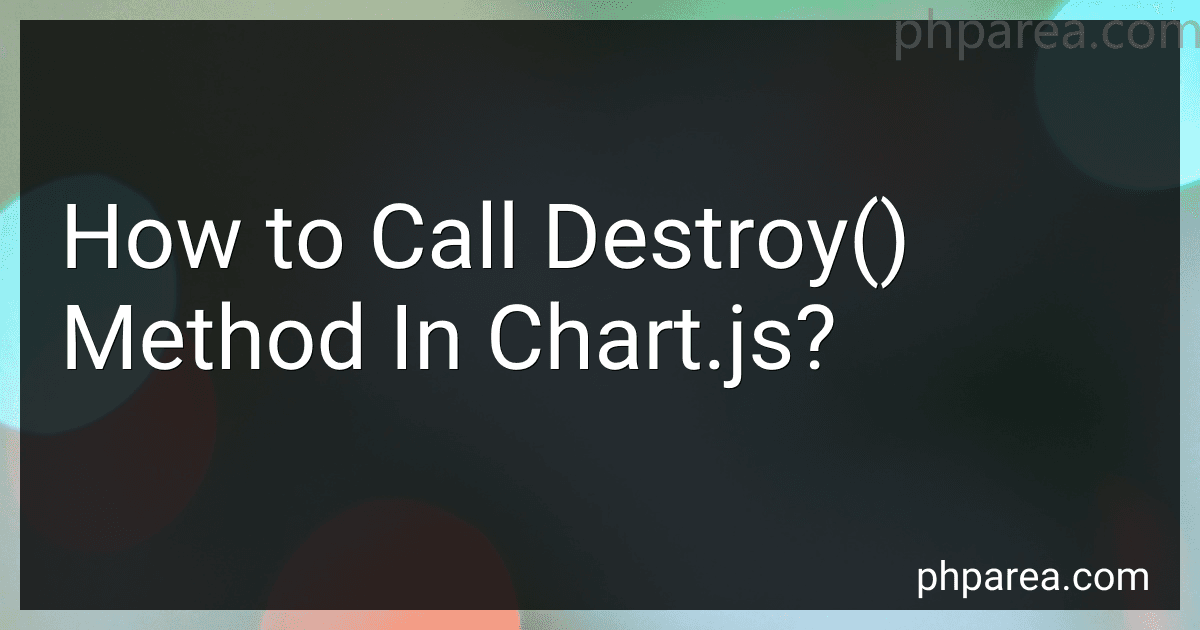 5 min readTo call the destroy() method in Chart.js, you simply need to access the chart instance and then call the method on that instance. This can be done by storing the chart instance in a variable when you create the chart, and then calling destroy() on that variable whenever you want to destroy the chart. By calling destroy(), you will remove the chart canvas from the DOM and clean up any associated event listeners and other resources.
5 min readTo call the destroy() method in Chart.js, you simply need to access the chart instance and then call the method on that instance. This can be done by storing the chart instance in a variable when you create the chart, and then calling destroy() on that variable whenever you want to destroy the chart. By calling destroy(), you will remove the chart canvas from the DOM and clean up any associated event listeners and other resources.
-
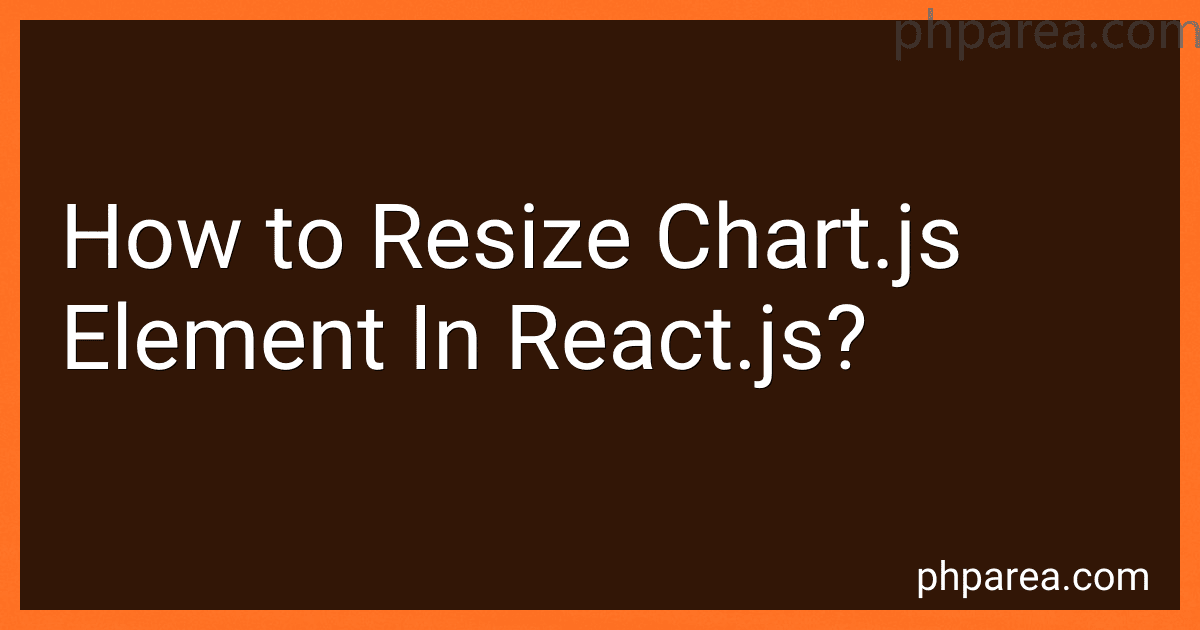 5 min readTo resize a Chart.js element in React.js, you can achieve this by setting the width and height of the container element that holds the chart. This can be done by applying inline styles directly to the container element, or by using CSS classes.One way to resize the chart element is by setting the width and height properties of the container element using inline styles.
5 min readTo resize a Chart.js element in React.js, you can achieve this by setting the width and height of the container element that holds the chart. This can be done by applying inline styles directly to the container element, or by using CSS classes.One way to resize the chart element is by setting the width and height properties of the container element using inline styles.
-
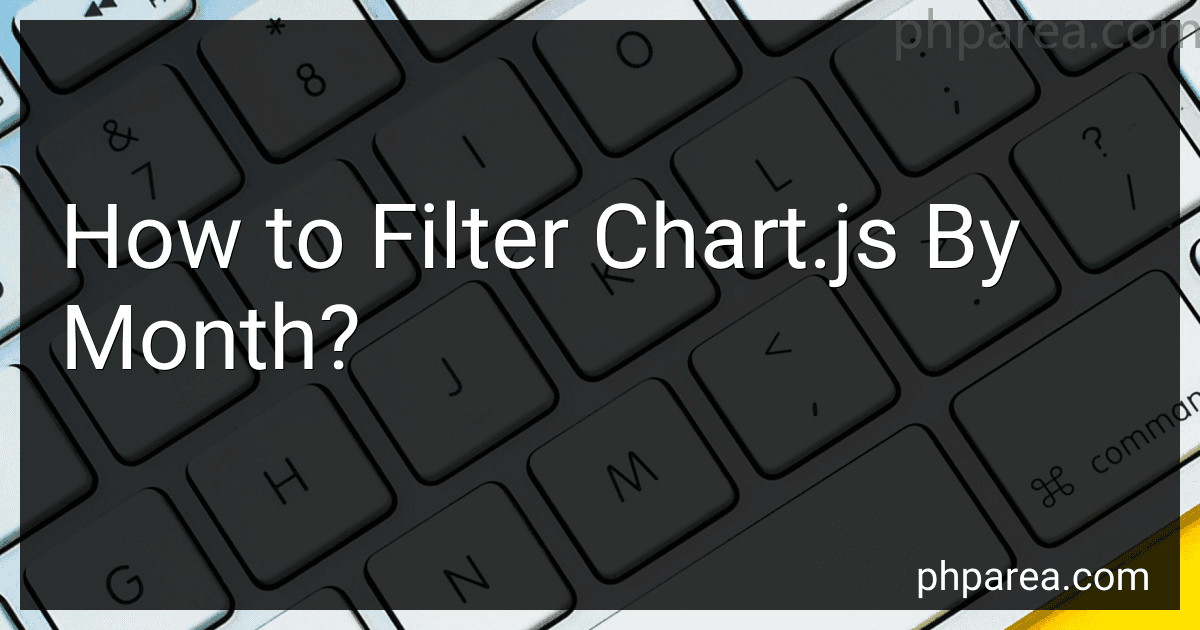 4 min readTo filter chart.js by month, you can use the built-in methods provided by chart.js to manipulate the data displayed on the chart. One approach is to filter your data array based on the month you want to display.For example, if you have a line chart showing data over multiple months, you can create a dropdown menu or input field for users to select a specific month. Then, filter your data array to only include data for that particular month before updating the chart.
4 min readTo filter chart.js by month, you can use the built-in methods provided by chart.js to manipulate the data displayed on the chart. One approach is to filter your data array based on the month you want to display.For example, if you have a line chart showing data over multiple months, you can create a dropdown menu or input field for users to select a specific month. Then, filter your data array to only include data for that particular month before updating the chart.
-
 3 min readTo limit the number of displayed points in a Chart.js chart, you can use the "data" property to specify the number of data points you want to display. Additionally, you can use the "maxTicksLimit" option in the scales configuration to set a maximum number of tick marks to display on the axis. This will limit the number of data points that are shown on the chart, providing a cleaner and more concise representation of your data.
3 min readTo limit the number of displayed points in a Chart.js chart, you can use the "data" property to specify the number of data points you want to display. Additionally, you can use the "maxTicksLimit" option in the scales configuration to set a maximum number of tick marks to display on the axis. This will limit the number of data points that are shown on the chart, providing a cleaner and more concise representation of your data.
-
 5 min readTo install Chart.js in Laravel, you can use npm to install the Chart.js library. First, you need to install npm if you haven't already. Then, navigate to the root directory of your Laravel project in your terminal and run the command "npm install chart.js". This will download and install the Chart.js library in your project.After installing Chart.js, you can include it in your Laravel project by adding the following line of code in your blade template file: You can then use Chart.
5 min readTo install Chart.js in Laravel, you can use npm to install the Chart.js library. First, you need to install npm if you haven't already. Then, navigate to the root directory of your Laravel project in your terminal and run the command "npm install chart.js". This will download and install the Chart.js library in your project.After installing Chart.js, you can include it in your Laravel project by adding the following line of code in your blade template file: You can then use Chart.
-
 7 min readTo pass data in Laravel with Chart.js, you can first retrieve the data from your database using Eloquent or Query Builder in your controller. Once you have the data, you can pass it to your view using the compact or with methods.Next, in your view file, you can create a JavaScript script that will use Chart.js to render the chart and pass the data to it. You can use inline script or include an external JavaScript file if you prefer.Make sure to initialize the Chart.
7 min readTo pass data in Laravel with Chart.js, you can first retrieve the data from your database using Eloquent or Query Builder in your controller. Once you have the data, you can pass it to your view using the compact or with methods.Next, in your view file, you can create a JavaScript script that will use Chart.js to render the chart and pass the data to it. You can use inline script or include an external JavaScript file if you prefer.Make sure to initialize the Chart.
-
 7 min readTo create a time series line graph in chart.js, you first need to include the chart.js library in your HTML file. Next, you will need to create a canvas element and give it a unique ID. After that, you can write a JavaScript code to configure the line chart by specifying the type as 'line', providing data as an array of objects with x and y values, and setting options such as scales, title, and tooltips.
7 min readTo create a time series line graph in chart.js, you first need to include the chart.js library in your HTML file. Next, you will need to create a canvas element and give it a unique ID. After that, you can write a JavaScript code to configure the line chart by specifying the type as 'line', providing data as an array of objects with x and y values, and setting options such as scales, title, and tooltips.
-
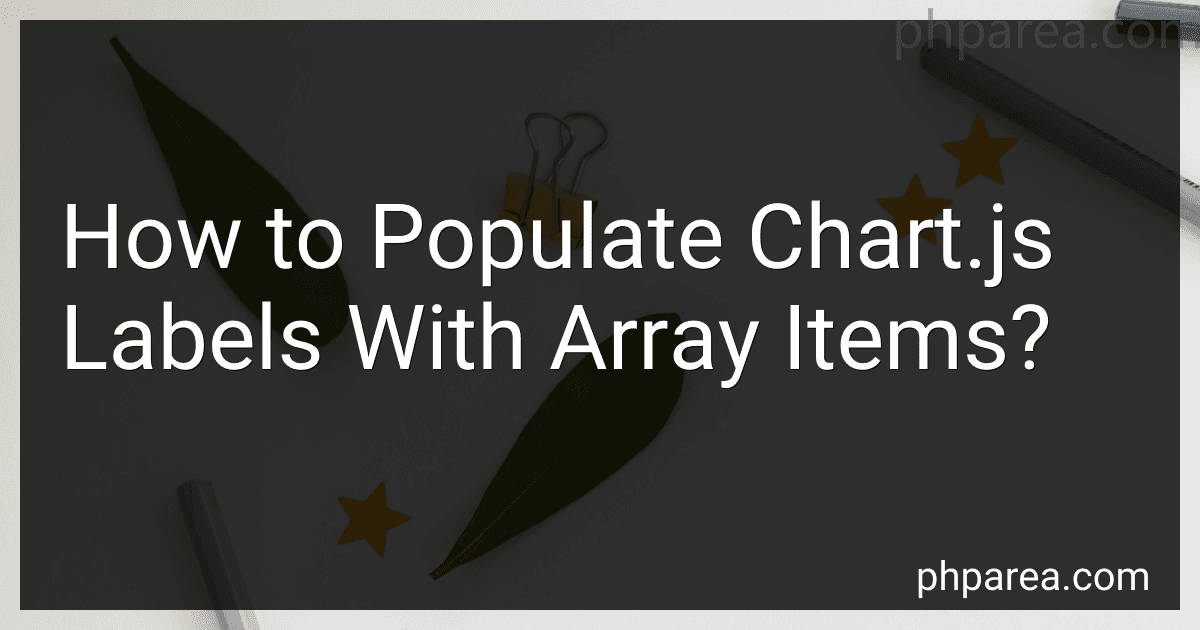 5 min readTo populate chart.js labels with array items, you first need to specify an array containing the labels that you want to display on the chart. You can then use this array to populate the "labels" property within the options object when creating your chart instance.
5 min readTo populate chart.js labels with array items, you first need to specify an array containing the labels that you want to display on the chart. You can then use this array to populate the "labels" property within the options object when creating your chart instance.
-
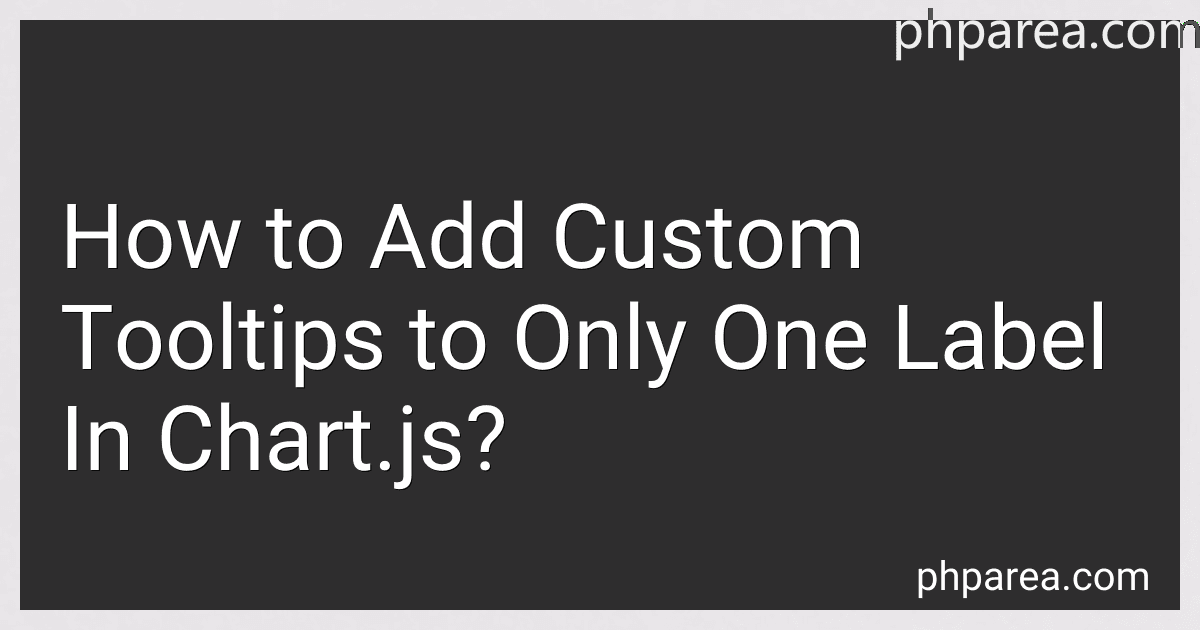 4 min readYou can add custom tooltips to only one label in Chart.js by using the tooltips callback function. First, you can add an array of tooltips to your chart configuration options with the tooltips key. Within this array, you can define a custom function to return the desired tooltip content for each label. This function can be conditionally set to only display custom tooltips for the specific label you want by checking the label index or value.
4 min readYou can add custom tooltips to only one label in Chart.js by using the tooltips callback function. First, you can add an array of tooltips to your chart configuration options with the tooltips key. Within this array, you can define a custom function to return the desired tooltip content for each label. This function can be conditionally set to only display custom tooltips for the specific label you want by checking the label index or value.
-
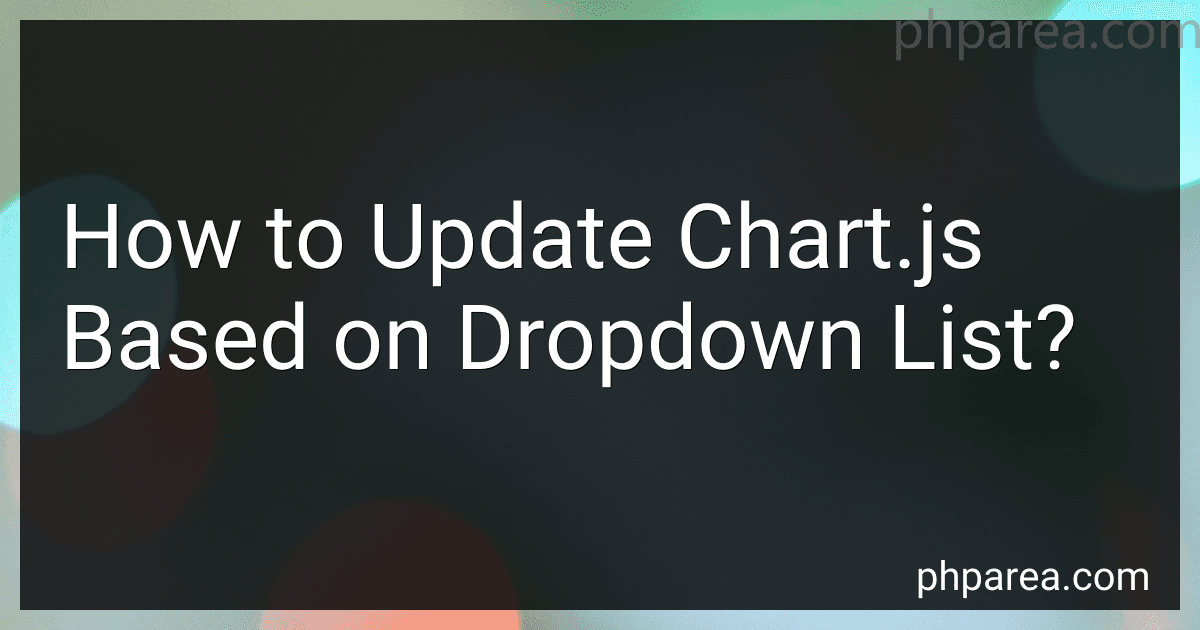 7 min readTo update a chart.js chart based on a dropdown list, you can use JavaScript to listen for changes in the dropdown selection and then update the chart accordingly.First, you'll need to create a dropdown list in your HTML document that contains the options you want to use to update the chart. Then, you can use JavaScript to add an event listener to the dropdown list that will trigger a function whenever the selection is changed.
7 min readTo update a chart.js chart based on a dropdown list, you can use JavaScript to listen for changes in the dropdown selection and then update the chart accordingly.First, you'll need to create a dropdown list in your HTML document that contains the options you want to use to update the chart. Then, you can use JavaScript to add an event listener to the dropdown list that will trigger a function whenever the selection is changed.